Jiyoun Kim

Associate Professor, Communication
Education
Ph.D., , University of Wisconsin
Research Expertise
Crisis & Risk Communication
Mass Communication
Science Communication
Dr. Jiyoun Kim’s research expertise lies in risk, science, and environmental communication. Her work contributes to three primary areas of scholarship: (1) examining the factors shaping public understanding of and attitudes toward science, the environment, and risk; (2) exploring the dynamics of public engagement with science, environmental, and risk issues on social media; and (3) designing effective messages to help the public make informed choices.
Specifically, her recent research focuses on (1) how risk-related information is communicated by governments, the non-governmental sector, and media organizations; (2) how online group-level cues (e.g., social media sentiment and metrics) influence individuals’ cognitive processing and willingness to engage with the issue; and (3) how to develop effective communication strategies in the context of risk, science, and the environment to capture public attention, create appropriate behavioral responses, and promote informed decision-making. Her research has been published in leading communication, risk, and science journals, including Science Communication, Environmental Communication, Journal of Applied Communication Research, International Journal of Strategic Communication, Journalism & Mass Communication Quarterly, and Risk Analysis: An International Journal.
Publications
All joking aside? Comparing the effects of a humorous vs. a non-humorous message strategy in building organization–public relationships and community resilience
An online experiment in the context of weather messages
Contributor(s): Jiyoun Kim, Brooke Fisher Liu, Anita Atwell Seate, Saymin LeeNon-ARHU Contributor(s): Daniel Hawblitzel
Funding Agency:
We thank the National Oceanic and Atmospheric Administration (NOAA) for funding this research through the VORTEX-SE Program (Award NA20OAR4590454). The views and conclusions contained in this paper are those of the authors and should not be interpreted as necessarily representing the official policies, either expressed or implied, of NOAA.
Communication scholars have studied the persuasive power of humor messages, but research provides mixed results. Also, the literature has been slow in demonstrating the practical effects of humorous messages on desired outcomes (e.g., organization–public relationships). Through an online experiment in the context of weather messages with samples of U.S. adults residing in the Southeastern U.S. (N = 209), we compared a humorous social media message designed to build relationships with the public to a non-humorous message in predicting OPRs and perceived community resilience when there is no high-impact weather on the horizon. Compared to a humorous message, a non-humorous message appeared to be more effective in increasing perceived community resilience and three dimensions of positive OPRs – trust, control mutuality, and commitment. The effects were more robust for community members with low to moderate levels of weather salience (i.e., the psychological value and importance that people have for the weather).
To warn or not to warn: Factors influencing National Weather Service warning meteorologists’ tornado warning decisions.
Weather warnings are critical risk communication messages because they have the potential to save lives and property during emergencies. However, making warning decisions is challenging.
Author/Lead: Jiyoun KimContributor(s): Anita Atwell Seate, Brooke Fisher Liu
Non-ARHU Contributor(s): Daniel Hawblitzel, Theodore Funk
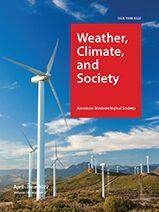
Weather warnings are critical risk communication messages because they have the potential to save lives and property during emergencies. However, making warning decisions is challenging. While there have been significant advances in technological weather forecasting, recent research suggests that social factors, including communication, influence warning meteorologists’ decisions to warn. We examine the roles of both scientific and social factors in predicting warning meteorologists’ decisions to warn on tornadoes. To do so, we conducted a cross-sectional survey of National Weather Service forecasters and members of management in the southern and the central regions of the United States, as well as conducted a retrospective data analysis of cross-sectional survey data from the central region Tornado Warning Improvement Project. Results reveal that dependency on radar velocity couplet and a variety of social factors predicted decisions to warn.
Engaging the Public in Disaster Communication: The Effect of Message Framing on Sharing Intentions for Social Media Posts
Using the 2018 California Camp Fire as a case study, this study explores how communication interventions influence people’s online message-sharing intentions.
Author/Lead: Jiyoun Kim, Yuan WangNon-ARHU Contributor(s): Lingyan Ma, Allison Chatham
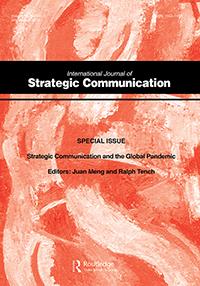
In times of emergency, organizations and members of the public have generated and shared crowdsourced information to help damaged communities. Using the 2018 California Camp Fire as a case study, this study explores how communication interventions influence people’s online message-sharing intentions. Specifically, through the lens of construal-level theory and prospect theory, this study demonstrates the direct and moderate persuasive effects of message framing on sharing intentions for Facebook posts. Using an online experiment with Amazon Mechanical Turk workers (N = 475), this study found that a gain-framed message encourages social media post-sharing intentions. The persuasive power of first-person versus third-person perspective frames differed depending on the use of gain versus loss frames. The discussion highlights the theoretical and practical implications of our findings.
How health organizations communicate about COVID-19 on social media: a comparative content analysis
Three bilingual researchers conducted a content analysis ofsocial media posts (N = 1,343) of these health organizations on Twitter and Sina Weibo to explore the frames of the COVID-19 pandemic, the purposes, and the strategies to communicate about it.
Author/Lead: Jiyoun Kim, Yuan WangNon-ARHU Contributor(s): Lingyan Ma
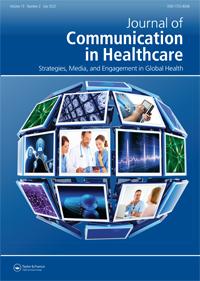
This study examined how different health organizations (i.e., the Chinese CDC, the Korean CDC, the United States CDC, and WHO) communicated about the COVID-19 pandemic on social media, thus providing implications for organizations touse social media effectively in global health crises in the future.
Prevention was the dominant frame of the social media content of these four health organizations. Information update was the major communication purpose for WHO, the United States CDC, and the Korean CDC; however, guidance was the primary communication purpose for the Chinese CDC. The United States CDC, the Chinese CDC, and the Korean CDC heavily relied on multiple social media strategies (i.e., visual, hyperlink, and authority quotation) in their communication to the public about the COVID-19 pandemic, whereas WHO primarily employed quoting authorities. Significant differences were revealed across these health organizations in frames, communication purposes, and strategies. Theoretical and practical implications and limitations were discussed.
“I lose” “I gain” vs. “They lose” “They gain”: The Influence of Message Framing on Donation Intentions in Disaster Fundraising
Study explores how message framing in charitable appeals influences individuals’ donation intentions.
Author/Lead: Yuan WangContributor(s): Jiyoun Kim, Lingyan Ma
Non-ARHU Contributor(s): Allison Chatham
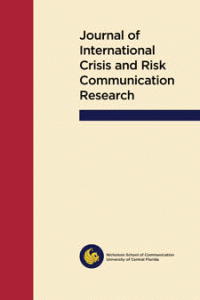
Grounded in the 2018 California Camp Fire context, this study explores how message framing in charitable appeals influences individuals’ donation intentions. A 2 (first person imagery perspective vs. third-person imagery perspective) × 2 (gain frame vs. loss frame) between-subject online experiment was conducted via Amazon’s MTurk. Results showed that gain/loss framing and imagery perspectives interactively influenced participants’ donation intentions. Specifically, when a message is loss framed, a first-person imagery perspective (“I lose”) message is more effective than a third-person imagery perspective (“they lose”) message in enhancing participants’ perceived issue relevance, induced empathy, and donation intention. In addition, when the message is framed with a third-person imagery perspective, a gain-framed (“they gain”) message is more persuasive than a loss-framed (“they lose”) message.
The Meaning of Numbers: Effect of Social Media Engagement Metrics in Risk Communication
Findings suggest that high engagement metrics show more considerable influences on willingness to read the full news story, bandwagon perception, and perceived newsworthiness than low engagement metrics.
Author/Lead: Jiyoun Kim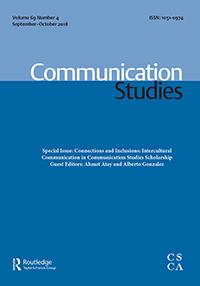
Using the health risks of nuclear plant accident as a context of enquiry, this study focuses on how peoples’ reactions to a piece of online news are affected by social media engagement metrics associated with the story. Based on the bandwagon heuristic, it assumes that online news with a high social media engagement metrics – high-sharing, -liking, and -commenting, show direct and mediated effects on respondents’ online news consumption and news sharing behavioral intention. Findings suggest that high engagement metrics show more considerable influences on willingness to read the full news story, bandwagon perception, and perceived newsworthiness than low engagement metrics. Also, news readership, bandwagon perception, and perceived newsworthiness served as mediators of the relationship between social media engagement metrics and news-sharing behavioral intention while there is no significant direct association found at the statistical level. The findings, however, indicate that social media engagement metrics affect when conditions are low-risk. The discussion highlights the theoretical implications of this research.
Decisions to choose genetically modified foods: how do people's perceptions of science and scientists affect their choices?
This study explores the effects of food science perception on food decisions in the controversial case of genetically modified (GM) foods.
Author/Lead: Jiyoun KimThis study explores the effects of food science perception on food decisions in the controversial case of genetically modified (GM) foods. We examine (1) how scientific consensus and scientific deference affect the public perception of GM foods; and (2) how perception and healthy eating interest influence people's actual food consumption decisions. We categorized our samples into four groups based on different risk/benefit perceptions of GM food: tradeoff, relaxed, skeptical, and uninterested in the process of further data analysis.
Predictors of Online News-Sharing Intention in the U.S and South Korea: An Application of the Theory of Reasoned Action
This study demonstrates what motivates media users to participate in the process of sharing online news in two cultures: South Korea and the United States (U.S.).
Author/Lead: Jiyoun KimContributor(s): Kang Namkoong, Junhan Chen
In its use of interactive media technology, the public takes on an important role in disseminating news, especially when sharing it through social networking sites. This study demonstrates what motivates media users to participate in the process of sharing online news in two cultures: South Korea and the United States (U.S.). Employing the theory of reasoned action, this study empirically displays how the intention to share online news is influenced by attitudes and subjective norms. Particularly, this study measures both attitudes toward and subjective norms about (1) the specific news article and (2) social media participation. Our findings reveal more substantial effects that attitudes have on behavioral intention than subjective norms in the U.S. group. The discussion highlights the theoretical and practical implications of our findings.


